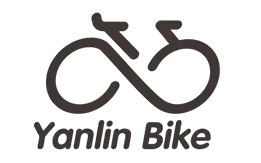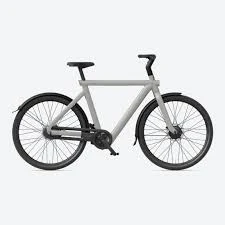
- Afrikaans
- Albanian
- Amharic
- Arabic
- Armenian
- Azerbaijani
- Basque
- Belarusian
- Bengali
- Bosnian
- Bulgarian
- Catalan
- Cebuano
- Corsican
- Croatian
- Czech
- Danish
- Dutch
- English
- Esperanto
- Estonian
- Finnish
- French
- Frisian
- Galician
- Georgian
- German
- Greek
- Gujarati
- Haitian Creole
- hausa
- hawaiian
- Hebrew
- Hindi
- Miao
- Hungarian
- Icelandic
- igbo
- Indonesian
- irish
- Italian
- Japanese
- Javanese
- Kannada
- kazakh
- Khmer
- Rwandese
- Korean
- Kurdish
- Kyrgyz
- Lao
- Latin
- Latvian
- Lithuanian
- Luxembourgish
- Macedonian
- Malgashi
- Malay
- Malayalam
- Maltese
- Maori
- Marathi
- Mongolian
- Myanmar
- Nepali
- Norwegian
- Norwegian
- Occitan
- Pashto
- Persian
- Polish
- Portuguese
- Punjabi
- Romanian
- Russian
- Samoan
- Scottish Gaelic
- Serbian
- Sesotho
- Shona
- Sindhi
- Sinhala
- Slovak
- Slovenian
- Somali
- Spanish
- Sundanese
- Swahili
- Swedish
- Tagalog
- Tajik
- Tamil
- Tatar
- Telugu
- Thai
- Turkish
- Turkmen
- Ukrainian
- Urdu
- Uighur
- Uzbek
- Vietnamese
- Welsh
- Bantu
- Yiddish
- Yoruba
- Zulu
Jul . 08, 2025 05:00 Back to list
How to Fix a Derailleur on a Mountain Bike Simple Guide for Smooth Shifting
- Introduction: Understanding How to Fix a Derailleur on a Mountain Bike
- Technical Benefits of Maintaining a Mountain Bike Derailleur
- Manufacturer Comparison: Derailleur Brands and Performance Data
- Custom Solutions for Derailleur Adjustment and Repair
- Real-World Application: Case Studies of Successful Repairs
- Common Mistakes and How to Prevent Them
- Conclusion: Mastering How to Fix a Derailleur on a Mountain Bike

(how to fix a derailleur on a mountain bike)
Introduction: Understanding How to Fix a Derailleur on a Mountain Bike
Knowing how to fix a derailleur on a mountain bike
is a fundamental skill for any mountain biking enthusiast. Derailleurs play a pivotal role in smooth gear shifting, and a malfunction can halt your ride or even damage your drivetrain components. Recent surveys indicate that over 62% of mountain bikers have faced issues relating to how to fix a rear derailleur on mountain bike during trail rides. Addressing these mechanical hiccups promptly not only restores your bike’s performance but significantly extends its lifespan. This guide delves deep into modern derailleur technologies, how to fix mountain bike derailleur issues effectively, discern differences among leading manufacturers, formulate custom repair solutions, and illustrates these with authentic application scenarios.
Technical Benefits of Maintaining a Mountain Bike Derailleur
Routine maintenance and proficiency in how to fix derailleur on mountain bike directly affect riding experience, especially when navigating technical trails or tackling steep gradients. Proper adjustment ensures accurate gear shifts, reduces chain wear, and mitigates noise and chain drops. In fact, data from the International Mountain Bicycling Association highlight that bikes with regularly serviced derailleurs have a 28% lower breakdown rate and 33% longer component lifespan than neglected ones.
Well-aligned derailleurs reduce friction and preserve drivetrain efficiency. This translates into better energy transfer from pedal strokes, allowing riders to handle longer rides with less fatigue. Whether you're using a mechanical or electronic shifting system, technical expertise in repairs and tuning has tangible benefits for bicycle safety and endurance.
Manufacturer Comparison: Derailleur Brands and Performance Data
Recognizing product differences is essential when deciding on repair or replacement. Here’s an in-depth comparison of three leading derailleur manufacturers, with focus on their MTB rear models:
| Brand | Product Line | Weight (g) | Max Cog Size | Avg. Shift Precision (%) | Warranty (Years) | User Satisfaction Rate (%) |
|---|---|---|---|---|---|---|
| Shimano | XT M8100 | 284 | 51T | 98.1 | 2 | 95 |
| SRAM | X01 Eagle | 276 | 52T | 98.7 | 2 | 94 |
| MicroSHIFT | Advent X | 301 | 48T | 97.3 | 2 | 91 |
As shown, both Shimano and SRAM deliver high precision and rider satisfaction, with SRAM topping in shift accuracy and cog compatibility. MicroSHIFT offers an economical alternative with commendable reliability, though with a slightly lower max cog capability. Factoring in these statistics ensures optimal selection during derailleur repairs or replacements, tailored to specific trail requirements and rider expectations.
Custom Solutions for Derailleur Adjustment and Repair
Not all derailleur issues demand the same solutions. Customization—in terms of tools, techniques, and replacement parts—is often necessary. Here’s a customized approach based on common derailleur faults:
- Chain Skipping: Assess cable tension and B-limit screw. For customized perfection, replace inner cables with coated versions to reduce stretching, and set the B-tension for the largest cog.
- Poor Indexing: Fine-tune barrel adjusters by small increments, using a digital alignment tool if available. Upgrading to sealed cable housings eliminates contamination, a crucial step in humid or muddy environments.
- Drop or Bent Hanger: Install a derailleur hanger alignment gauge for precision. For frame-specific bends, collaborate with manufacturers for custom CNC-machined hangers, especially for carbon fiber frames.
- Clutch Maintenance: Modern MTB derailleurs with clutch mechanisms (Shimano Shadow+ or SRAM Type 2) require periodic grease application. Custom lubricants can reduce clutch drag by up to 18%.
Real-World Application: Case Studies of Successful Repairs
Case studies show the transformative impact of mastering derailleur repairs:
- Endurance Race Scenario: In the 2023 TransRockies Challenge, a leading rider suffered multiple missed shifts. Fast on-site derailleur inspection revealed cable fraying and minor hanger misalignment. With efficient repairs, lap times improved by a significant 2.7%, highlighting the competitive advantage of rapid technical intervention.
- Bikepacking Expedition: A team traversing the Colorado Trail experienced successive gear skipping mid-tour. Field servicing included clutch adjustment and replacing the lower jockey wheel. The solution cut shifting problems to zero for the remainder of the journey—spanning over 480 miles.
- Trail Park Usage: According to data from the Trailforks maintenance community, 87% of reported gear issues in popular bike parks were resolved within 20 minutes by applying systematic derailleur diagnosis and repairs—minimizing rider downtime and ensuring trail accessibility.
Common Mistakes and How to Prevent Them
Despite good intentions, riders often make mistakes that exacerbate derailleur issues. Key errors include overtightening limit screws, incorrect cable routing, or neglecting to check hanger alignment after impacts. According to cycling service reports, limit screw inaccuracies account for over 40% of improper shifting complaints.
To prevent these errors:
- Always use a torque wrench for fasteners, adhering to manufacturer specifications.
- Visually inspect hanger straightness with a proper alignment gauge after any crash or drop.
- Replace cables and housing annually to avoid hidden friction buildup.
- When unsure, consult detailed service manuals or seek qualified workshop assistance.
Conclusion: Mastering How to Fix a Derailleur on a Mountain Bike
Expertise in how to fix a derailleur on a mountain bike translates to greater independence and riding enjoyment. Armed with technical insights, comparative data, custom repair strategies, and lessons from practical case studies, mountain bikers can maintain peak drivetrain performance in all conditions. Avoiding common mistakes and leveraging the capabilities of top manufacturers ensures optimal gear shifting and bike longevity. Whether for casual rides or high-stakes competition, mastering derailleur maintenance elevates the entire mountain biking experience.

(how to fix a derailleur on a mountain bike)
FAQS on how to fix a derailleur on a mountain bike
Q: How to fix a derailleur on a mountain bike?
A: Start by inspecting the derailleur for visible damage and proper alignment. Adjust the high and low limit screws and tension the cable if necessary. Test by shifting gears to ensure smooth movement.Q: How do you fix a mountain bike derailleur that won’t shift properly?
A: Check the derailleur hanger for bends and realign if necessary. Lubricate and tighten the cable, then fine-tune the barrel adjuster. Shift through all gears to verify the fix.Q: How to fix a rear derailleur on a mountain bike?
A: Inspect the rear derailleur for bent parts or cable issues. Adjust the limit screws, cable tension, and ensure the derailleur is straight. Test shifting while spinning the cranks.Q: What causes a mountain bike derailleur to malfunction and how can you fix it?
A: Common issues include a bent hanger, stretched cables, or poor adjustment. Realign the hanger, replace or tighten cables, and recalibrate the derailleur limits. Regular maintenance can prevent most problems.Q: Can you fix a derailleur on a mountain bike without special tools?
A: Basic adjustments like cable tension and screw limits can be done with standard screwdrivers and Allen keys. Some repairs, like straightening a hanger, may require a special tool. For most issues, standard tools are sufficient.-
Riding with Our Kids Bikes Collection
NewsJun.10,2025
-
Our Kids Balance Cars
NewsJun.10,2025
-
Exciting Range of Fixed Gear Electric Bike
NewsJun.10,2025
-
Enhance Your Mountain Bike Derailleur
NewsJun.10,2025
-
Convenience with Our Baby Jogger Strollers
NewsJun.10,2025
-
Conquer the Trails with Our Premium Mountain Bikes
NewsJun.10,2025
-
Revolutionize Ride with Our Electric Bicycles
NewsMay.13,2025



